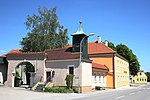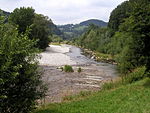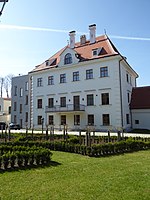Gemeinlebarn
Cities and towns in St. Pölten-Land DistrictLower Austria geography stubs

Gemeinlebarn is an Austrian village in the community of Traismauer in the district of Sankt Pölten-Land, Lower Austria. Its population is about 1000 inhabitants. Its Old High German name is Lewary and so most of the native "Gemeinlebarner" (citizen of Gemeinlebarn in German) call it Lewing. The village is placed in the west of "Tullner Becken" (the lowland around the city of Tulln and its surrounding).
Excerpt from the Wikipedia article Gemeinlebarn (License: CC BY-SA 3.0, Authors, Images).Gemeinlebarn
Grißfeldstraße, Gemeinde Traismauer
Geographical coordinates (GPS) Address Nearby Places Show on map
Geographical coordinates (GPS)
| Latitude | Longitude |
|---|---|
| N 48.333333333333 ° | E 15.8 ° |
Address
Grißfeldstraße 35
3133 Gemeinde Traismauer
Lower Austria, Austria
Open on Google Maps










